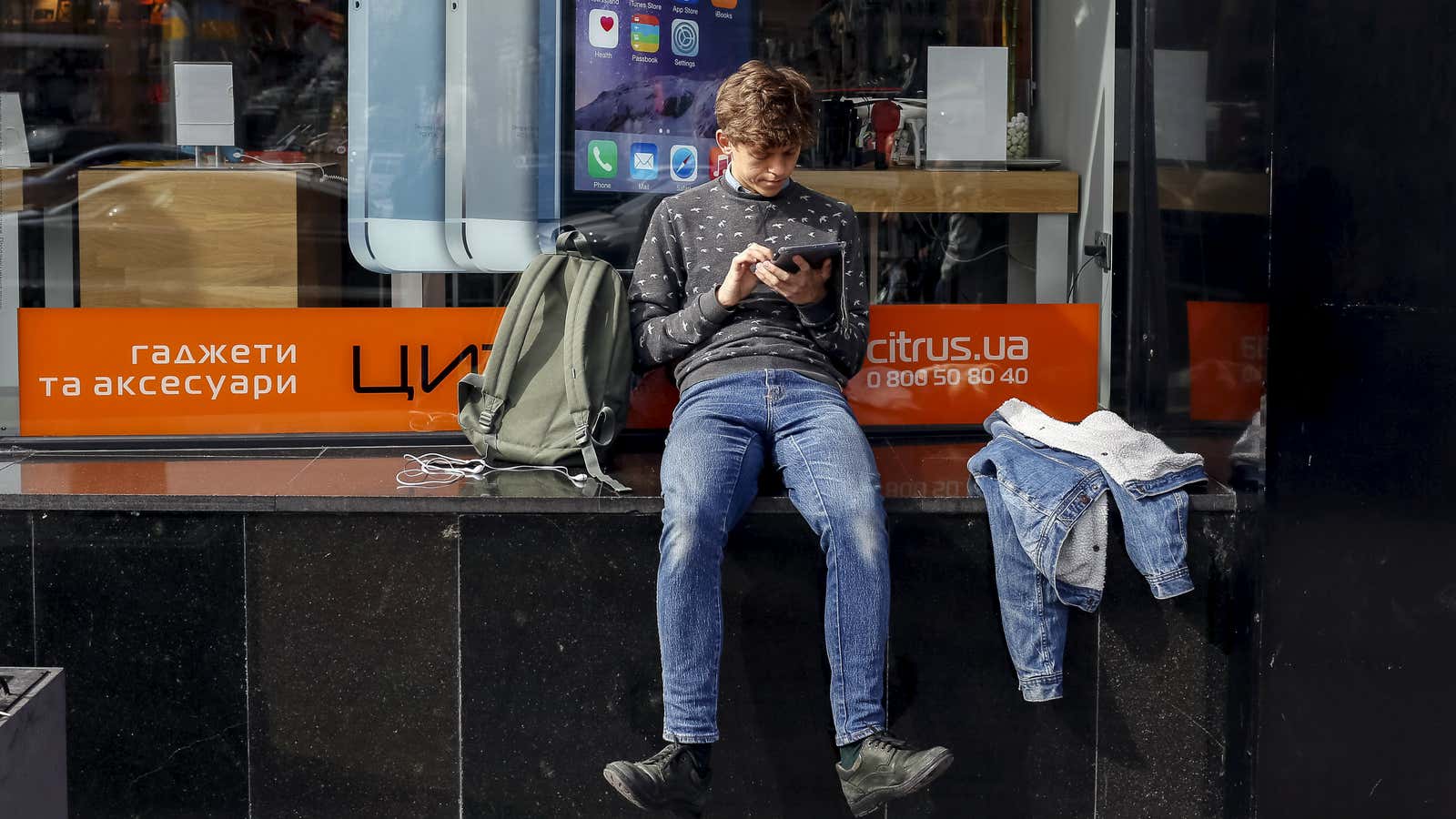The Monday Note survey on News applications usage yielded surprising findings:
(1) You rely on very few news apps;
(2) Twitter and RSS-related apps score quite high—they are the de facto vector for news;
(3) Once huge, Flipboard is losing ground fast while Apple News is not faring well;
(4) Half of readers surveyed would rather have no ads in exchange for a monthly fee.
On Jan. 4, we launched a survey on the use of mobile news apps (see “Apps We Live By“). So far, we collected 953 valid responses—crunched with the help of the French data analytics startup Kybelex.
Sound methodology requires a few words about our sample’s specificities: The Monday Note is primarily read by tech and media people; our posts gather 30,000 to 100,000 views each week; the newsletter goes to 13,000 direct subscribers.
The site’s audience is distributed as follows (source: Google Analytics):
- US: 49%*
- UK: 9% *
- Canada: 6%
- France: 4%
- Germany: 4%
- Australia: 3%
- India: 2%
(*) in fact, the share of US/UK readership is higher as Monday Note is republished by Quartz.
Language settings access is predominantly English (81%).
Age-wise, more than 60% of our audience is below 45 with the following frequencies:
- 25-34: 33%
- 35-44: 30%
- 45-54: 16%
Access mode is distributed as follows:
- 64% read us on a desktop,
- 27% on a mobile,
- 9% on a tablet.
The mobile audience is predominantly iPhone (48%) and iPad (23%). The most-used browser is Chrome (47%), followed by Safari (32%), Firefox (9%), Safari in-app (7%), and Internet Explorer (3%).
Further specifics of our survey: A largely anglo-saxon audience, an over-representation of Apple users and, as identified by Google Analytics, heavier on “technophiles,” “mobile enthusiasts,” “news junkies,” and “avid investors.” We have a high rate of people from the financial sector, both in corporations and in the venture capital community, as confirmed by email addresses in our database.
Now that you know what you need to know, here are the results:
1. Usage of news apps is very concentrated
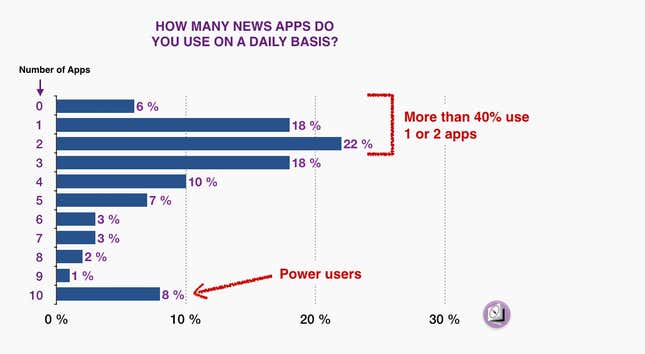
The share of people who use one or two apps (40%) or one to three apps (58%) is surprisingly high considering the number of free apps available for news reading.
Put another way, while in the physical world people rarely pick-up or subscribe to more than two newspapers, the lower price factor in digital, combined to a wide free supply and much cheaper subscriptions did not induce diversity. Users make their selection of apps, use them intensely but, as we’ll see in a moment, they can also make changes. This is not great for the news industry. For a publisher, making its way in the top three, or landing on the first screen of a smartphone is complicated and costly marketing-wise.
2. Twitter and RSS Apps takes all
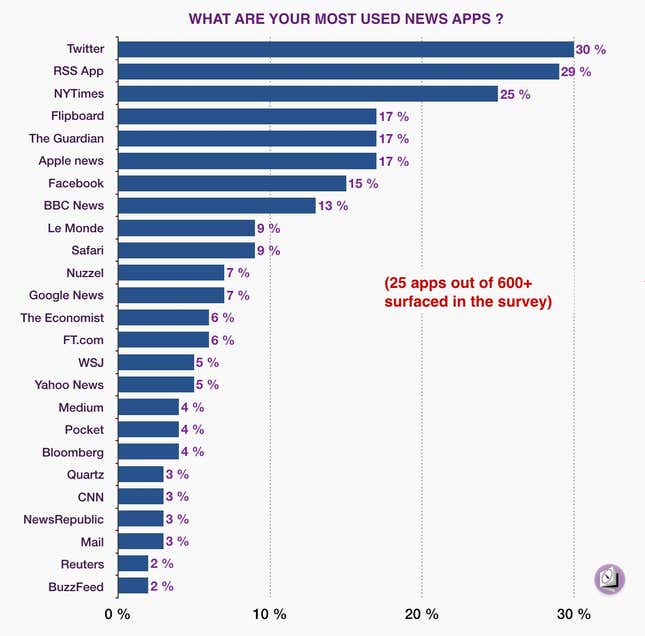
Our poll surfaced about 600 apps. But again, the long tail is in evidence: 95% of apps mentioned by the users don’t break the 2% share.
Out of the 25 selected from the sample above:
• 20 are free
• 11 are aggregators
• 12 are recognized news brands, including 7 legacy media brands
In that category, the New York Times and The Guardian dominate.
Note that Safari is quoted by readers as a gateway to various news brands. Medium is a publishing/social user-generated platform (doing well given its rather elitist appeal). The mention of “mail” among most-used news apps shows the importance of newsletters for news distribution (more on this in a future Monday Note). As for Quartz, it is in fact a mobile site (soon to be an app according to its publisher—it will be interesting to see how it fares).
The good performance of Le Monde mostly reflects the weight of French Monday Note readership (4% of the total; both Jean-Louis Gassée an I are French.) Still, Le Monde is doing better (#9) than other French media such as Le Figaro (#28), L’Equipe (#29), Les Echos (#31), Libération (#42), and Le Point (#52.)
To put it simply, Twitter is the main news mobile application (or service, as we aggregated those who read their Twitter feed in a Twitter-like app or on Twitter.com).
As for RSS feeds, clunky as they are, our readers clearly state it remains the best way to scan the news.
This should be a wake-up call for established news organization: none of those, legacy or pure players, has been able to come up with a decent RSS app. This field has been left entirely to new players, more agile and better connected to tech habits.
When asked to rank their top five news apps, readers responded as follows:
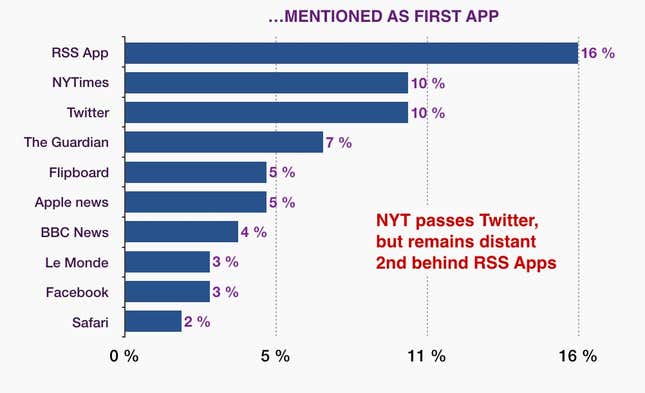
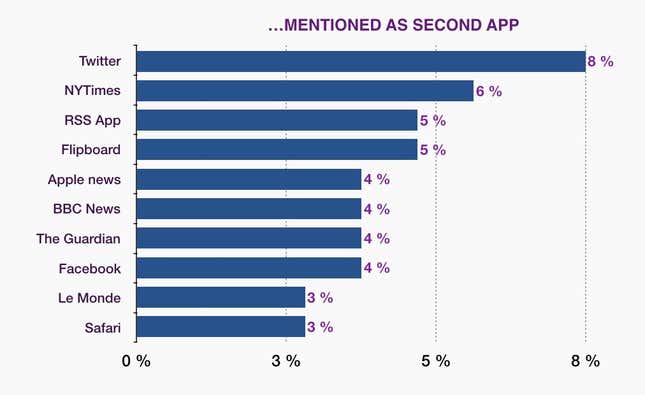
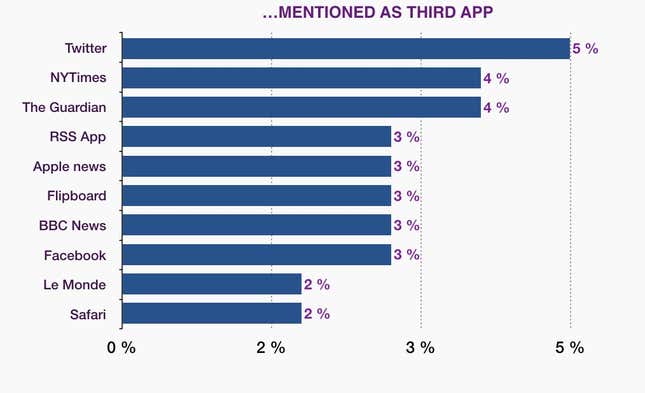
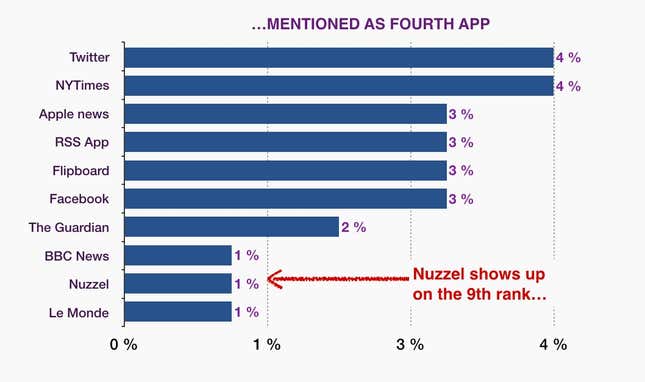
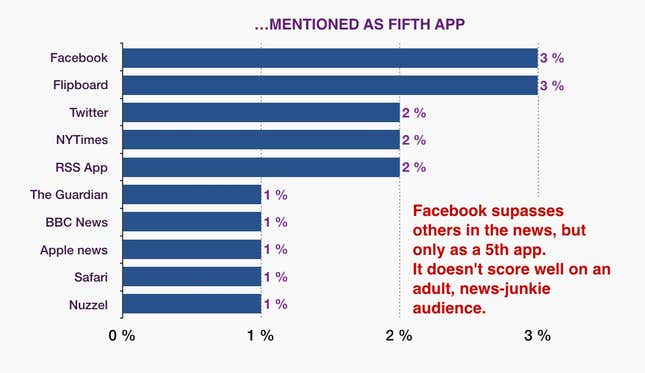
Note that the preeminence of Twitter and RSS readers contradicts a more noble preference expressed by readers: When asked to rank their eight most important criteria for a mobile news app, readers put “Trust and content quality” first. Sure, guys. After all, we all say we prefer PBS or the BBC, but sometimes we sneak a look at CNN or Buzzfeed…
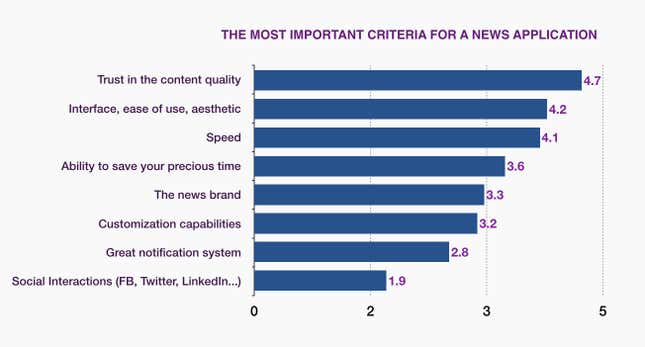
3. Still big, Flipboard is fast losing ground
When asked: “Which news app did you drop in the last 12 months,” readers mentioned Flipboard by a wide margin, with a rate three times higher than its next competitor.
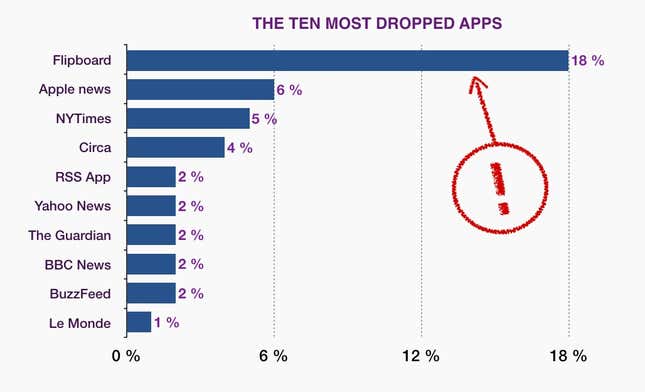
Flipboard’s erosion is the confirmation of a widely spread view in Silicon Valley. There are two obvious reasons for this: One, despite its past luster, the aggregator has rested on its laurels with no significant technology breakthrough (unlike Nuzzel, for example); two, the barrier to entry is significantly lower when it comes to building a RSS reader. As an example, Feedly, the most quoted RSS app in our survey provides a simple, no-frills but efficient product—a good replacement for the inexplicably abandoned Google Reader.
As for Apple News, an app installed by default on iOS devices, it could fare better. This must be retribution for Apple’s we-know-better-than-thou approach: its earlier Newsstand didn’t live up to expectations, and Apple News, disconnected from contemporary usage patterns for news, seems slow to take off.
4. The ad blockers temptation, and an openness to pay
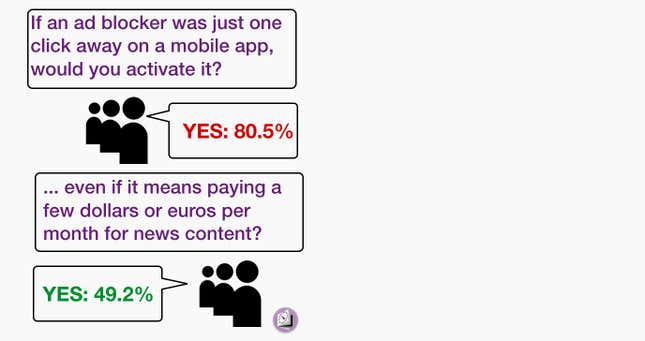
This is another surprise in this poll: While eight out of 10 users are ready to actively reject ads by using an ad blocker, more than half say they would be willing to pay “a few dollars or euros per month” to get their content without ads. Here, I see a half-full glass: the 80% rate could (will) drop once a new breed of less annoying, designed-for-mobile ads emerges. As for acceptance of a pay model, the 50% rate is roughly five times better than the rule of thumb we see on the desktop. Here, the news media can see some light (OK, a candle) at the end of the tunnel.
That’s it for today, with my thanks to those of you who took the time to fill the survey.
This post originally appeared at Monday Note.




